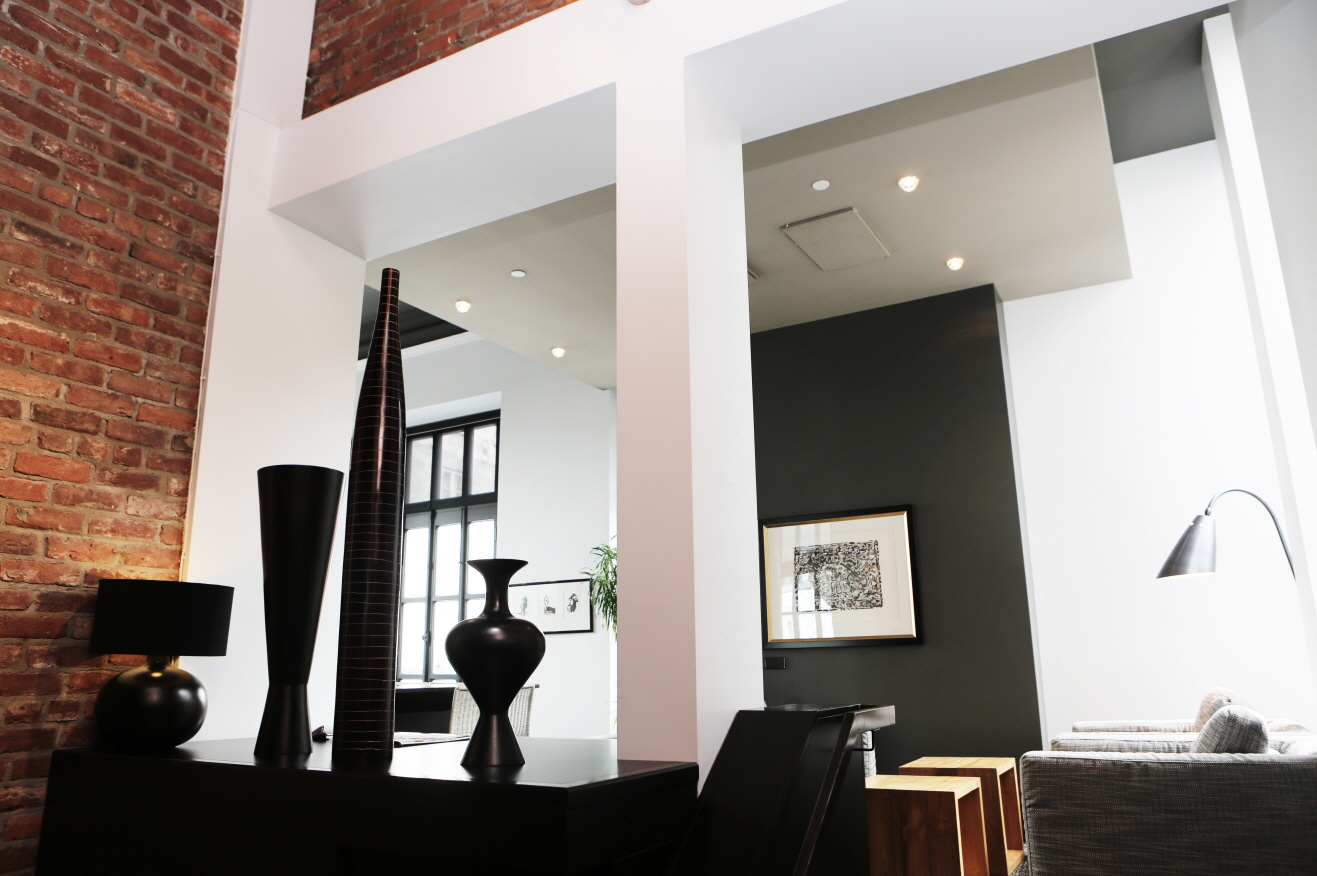Searching for your dream home is very simple with New Star Realty! 
Tag Archives: agent
DO NOT GIVE UP
Thanksgiving Day Foods

Thanksgiving
< 미국 추수감사절 음식들 >
칠면조를 대신할 수 있는 요리는 구운 햄(Baked Ham), 거위와 오리 구이, 사슴 요리, 프라임 립(Prime Rib)가 있습니다.


스터핑은 굳이 설명하자면 삼계탕의 닭 배속을 채울 때 넣는 예를 들어 찹쌀, 대추, 수삼 등이 섞인 재료를
요리 후 꺼내거나 별도로 오븐에 넣어 요리해 접시에 내 놓는 것과 비교할 수 있을 것 같습니다


4. Mashed Potatoes (메쉬드 포테이토)
으깬 감자나 뿌리채소들(Mashed Potatoes and mashed yam, mashed turnips)등이 있습니다.
고기요리와 곁들여 잘 나옵니다.

5. Cranberry Sauce (크랜베리 소스)
칠면조 구이와 크랜베리 소스를 함께 먹습니다.
하지만 대부분 시중에서 통조림 크랜베리 젤리를 사서 동그란 모양으로 썰어 먹습니다.


호박 파이(Pumpkin Pie), 애플파이(Apple Pie)와 그리고 피캔파이(Pecan Pie)를 꼽을 수 있습니다.
단 것을 좋아하는 사람은 위에 휩크림이나 아이스크림을 파이 위에 얹어서 먹기도 합니다.

7. Squash Soup (호박죽)
Butternut squash라는 호박을 이용해 만드는 호박죽입니다.

8. Green Bean Casserole

9. Brussels Sprouts (브러셀 스프라우트)

10. Biscuits

11. Sweet Potato Casserole (고구마 캐서롤)
고구마 캐서롤입니다. 아래 보이는 동글동글 폭신폭신한 저것들, 뭔지 아시겠죠? 마쉬멜로우입니다!

기타 사이드 메뉴
옥수수, 그린빈스(껍질콩), 쌂은 당근과 완두콩, 콘 브레드,
< 이런것도 있어요~! >
위시본 (Wishbone)
바로 위시본 (Wishbone)을 뿌러뜨리는 것이라는데요,
그 뼈를 함께 뿌러뜨리는 것으로 긴쪽을 가진 사람의 소원이 이루어진다고 하는 추수감사절의 전통 중에 하나라고 합니다.

Korean Real Estate
미주 부동산의 스위치를 켜다!
부동산 사고팔 때는 뉴스타!
미주부동산의 빛나는 미래를 위해 뉴스타에서 불을 밝혀 드립니다.
큽니다. 대단합니다. 장합니다. 꿈을 만들고 이루는 기업입니다.
믿음,성공,근면,성실의 뉴스타부동산에서 강점을 가지십시오.
부동산 회사 선택이 성공의 지름길입니다.
미주 부동산의 미래를 이끌 든든한 희망을 드리겠습니다.
New Star Realty Korean Site Renewal
6 Easy Ways to Become a More Profitable Real Estate Investor

For many real estate investors, it’s tough to make a profit. It’s not as easy as the TV shows make it seem. But with some basic best practices, you can make some serious money.
I’ve invested in rental property for over 10 years now, and I’ve learned some tough lessons. However, I’m more bullish on real estate investing than I ever have been. There has never been a better time to be a landlord in America.
Real estate doesn’t change much, as it can take decades for a property to appreciate. What can change rapidly is how you manage your properties.
Before modern technology, tenants would:
- Drive around and/or read the newspaper classifieds to find available rental properties.
- Call and schedule a tour of the property.
- Fill out a paper application.
- If accepted, they would meet you at the property, an office, or a coffee shop to sign the lease.
If you’ve used any kind of technology in the past five years (like a smartphone), you’re aware of the benefits.
Real estate is prime for disruption because many agents and investors are using technology from the 90’s.
If you like the idea of using technology to save time, here are some ways to make your real estate business more profitable:
1. Install A Programmable Thermostat
Housing is a commodity and isn’t, by itself, personal. However, people crave personalization and want to feel special. If you are targeting a particular demographic, think of how you can offer extra and personalized features to the property. One of my friends caters to senior citizens, for example. He makes sure his doors are 33 inches wide and that the properties have security systems.
I like to target energy-conscious tenants. Even if you don’t personally care much about the environment, you probably don’t like having a high utility bill. I suggest getting the first-generation Nest to save money.
Nest is a programmable thermostat. Although programmable thermostats have been around a long time, the Nest is different because of its simplicity of use. My wife installed ours in less than 10 minutes and had it integrated on her iPhone in fewer than five minutes. And best of all: The Nest learns your behavior and automatically adjusts its settings. A Nest pays for itself in about a year.
Another great item to personalize a property for your energy-conscious tenant is the Philips Hue lightbulb, a programmable, color-changing LED bulb that gives users flexibility over the color of light emitted. This allows you to set the mood for any occasion.
2. Install High-Tech Locks
What happens when one of your tenants gets locked out?
Many tenants live on their smartphones and enjoy the productivity benefits. So consider adding a smart lock that can open with a key or bluetooth. This is a benefit to tenants in case they need to let a friend in, and it’s a benefit to you as you can grant temporary access to maintenance workers.
3. Use Online Systems
Offline and paper-based transaction methods are time-consuming and costly.
The cost with using a paper-based system is with the extra time it takes to sort through paper-based applications, screen tenants manually, and process checks. This problem is exacerbated in my business, since I have a business partner and we like to share information.
To solve this, I use Cozy. With Cozy, all these processes are fast and easy because we have a company log-in that we both use.
4. Collect Rent Electronically
The number one complaint I hear from tenants is that their landlord doesn’t accept electronic payments. Making tenants write a check and mail it to you is not timely, efficient, or convenient. Other tenants want to pay in cash, which requires you to collect in person, which is also inefficient.
Cozy offers a way for tenants to pay their rent electronically.
- If your tenants set up an ACH transfer, payments are deposited within 3-5 days of the tenant initiating the payment, and it’s free for them.
- If your tenant pays with a credit card, they pay 2.75%. The money is deposited 1-2 days after they pay.
I encourage you to visit the “How Payments Work” section on Cozy’s website for more information.
5. Develop a Niche Brand
Branding your business by clearly communicating who you are to the public can be beneficial.
I’m a coffee fanatic, for example, and I make it a point to buy a coffee mug from every title company I have a closing with. Recently, a title company was trying to get my business, and they brought my team and me branded glasses. I told them this was unique. They responded with:
We know you have everybody else’s coffee mugs, so we thought you should get glasses.
I guess my brand is getting around!
Business cards are often thrown away, but coffee mugs with the name of your company and phone number are incredibly useful.
You can also offer a monthly giveaway for local products and services. The cost of this branding doesn’t have to be expensive, and the payoff from longer-leasing tenants and referrals can make this a huge return on investment.
6. Upgrade Your Computer’s Security
With wireless connectivity for several applications in your properties along with Wi-fi that is sometimes public, security will be the forefront of any conversation about technology advances.
As landlords, we collect a lot of information about our tenants: names, phone numbers, address, income, workplace, next of kin, references, etc. It’s not too farfetched to think of personalized services based on this information. However, what would happen if this data were stolen?
I recommend taking extra security precautions with internet-based tools such as using a password manager like 1Password, which saves all your PINs, passwords, and even credit card information in one place. When you need to sign into something, you just have to click once. 1Password information is encrypted, so you never have to worry about that information being hacked.
Credit to Jimmy Moncrief
Jimmy is a multifamily real estate investor and bank credit officer.

newstarrealty.com
Noisy Neighbors Drive Me Crazy. Now What?

Whether you’re a renter in an apartment building, a duplex, or any other rental home, you deserve relatively quiet living conditions, no matter how many neighbors live nearby.
While neighborly noise is to be expected once in a while, a neighbor’s blaring stereo, shouting matches, or late night dance parties might take things too far. So what should you do when you can’t handle the noise?
What Not to Do: A Personal Story
During my renter years, I moved into what seemed like an ideal scenario: a budget rent price for a modest upstairs unit in a landlord’s house. Things seemed great at first, until the landlord and her teenage daughters regularly shouted at one another from 5 a.m. to 6 a.m., consistently waking me after just a few hours of sleep. If I tapped on the floor (their ceiling) to remind them of the noise, the landlord yelled at me to shut up! Unbelievable, right?
They also kept a young doberman in a cage while they were away at work and school. Naturally, he wasn’t thrilled about and he barked. A lot. When the kids came home from school, he barked even more, at which point the angrier of the teens would shake the cage and shout at the dog. I’m sure it was traumatic for the dog, and all the noise and anger traumatized me for years, even after I left.
I couldn’t afford to move out, so I dealt with the nighttime noise by turning on a loud fan before bed each night to help lessen the impact of the downstairs discord. I was afraid to complain too much for fear of eviction, especially since we didn’t have a written lease. Once I finally earned enough to move out, I moved, posthaste.
Quiet Enjoyment
Don’t put yourself through the anguish I suffered for years when I was too inexperienced to know how to handle such things. Every renter — even in a situation such as mine — has a right to quiet enjoyment, the right to a peaceful place to live. This doesn’t mean you won’t hear an upstairs neighbor walking or moving furniture from time to time. It means the place should be peaceful enough from day to day to sleep or to carry on daily activities without being interrupted by aggravating levels of neighborly noise.
Step 1: Give a Simple Neighborly Suggestion
If you know your neighbor — at least well enough to share a friendly smile or “hello” once in a while — point out in a calm, gentle manner that their speakers, dog, or television is so loud it’s disruptive. It could be that they’re unaware that anyone else can hear what goes on behind closed doors, or maybe they think their dog is quiet while they’re away for the day. For your own records, write down the date, a summary of what each of you said to one another, and whether the issue was resolved.
If you feel intimidated about approaching your neighbor directly, go to Step 3 below.
Step 2: Read Your Lease
If your neighbor isn’t responsive or repeatedly causes a cacophony that keeps you up all hours of the night, it may be time for more serious action. If you live in a building, read your rental agreement to look for any language about excessive noise. Make a copy of the page, highlighting the appropriate information, and give it to the noisy neighbor. Be sure to point out any verbiage about potential for eviction due to noise violations or information about “quiet hours” in which all tenants are expected to be relatively quiet.
Step 3: Contact the Landlord
Contact your landlord, and spell out exactly what’s going on: the type of noise, when and how often it happens, and any methods you’ve taken to try to resolve the issue yourself. If the noise has been going on for hours, ask an on-site property manager or the landlord to check out the situation while it’s happening.
Step 4: Get Your Town Involved
If your neighbor’s noise can be heard outside or from shared common areas such as a hallway, they may be in violation of local noise ordinances. Contact the non-emergency police number if you can’t find this information on your town’s website. Ask the representative for information about noise regulations. If your neighbor is in violation of the ordinance, let the landlord know. It’s in the landlord’s best interest to deal with the problem since he or she could be held responsible and receive a warning or citation.
If the noise sounds dangerous or threatening or all of your efforts have seemed in vain so far, contact the police. This approach works best if the noise has been going on for hours or if it happens at the same time regularly. The police or a noise-enforcement official may visit with a decibel meter to determine whether your neighbors are in violation of local laws.
Step 4: Arrange a Meeting
Contact other neighbors to see if they’ve been bothered by the noise. If so, arrange a meeting with your landlord and all affected, including the noisy neighbor. Power in numbers may be enough to convince the neighbor to quiet down or for the landlord to evict a noisy tenant. If it seems the noisy person isn’t interested in quieting down, inform them that you and the others plan to take them to small claims court if things don’t change. Also say that the cause is well-documented by you, other tenants, the landlord, and even local authorities. All of this evidence may be enough to create a peaceful environment.
Alternate Action: Moving Out
Since you are guaranteed a peaceful living environment, you may have the right to terminate your lease if lack of peace is an ongoing issue.
Credit to Kathy Adams
Kathy is an award-winning investigative journalist, not to mention a writer, brand blogger, decor/DIY expert, renter, commercial landlord. She also writes for brands such as Behr, Kroger, Canon and Black+Decker on topics pertaining to home and apartment decorating and maintenance.

4 Surefire Tips for Better Listing Photos
Simply understanding how to use a few key camera settings and pieces of equipment can make all the difference.

It can’t be stressed enough: Great photos help sell homes. The National Association of REALTORS®’ own research shows that well over 90 percent of home shoppers look online for at least a part of their search. For almost half of all buyers, accessing digital listings is the very first step in their process. And while there’s been much speculation as to the homebuying behaviors of millennials, this much is known for sure: Digital natives are much more comfortable with browsing home listings from mobile devices.
None of this is breaking news, but it does highlight just how important digital representation can be when you’re trying to show a home. One industry study found that when listings were accompanied by high-quality photos taken with professional equipment, they spent significantly less time on the market and fetched a premium of $3,400 on average.
Unfortunately, interior shots pose a variety of photographic challenges that are difficult for amateur photographers. Real estate pros shouldn’t be expected to transform overnight into professional camera wielders, but you can certainly benefit from a few tricks up your sleeve and some decent equipment.
Don’t Turn Toward the Light
This scenario might feel familiar: You want to show off the new windows in your client’s living room, but every time you snap a photo, the image is totally blown out. Photos with dark foregrounds and overexposed windows are a common problem that happens when ambient light from the outdoors tricks the camera’s light meter into overcompensating. A flash will balance out the lighting in the room, giving you a better shot. Alternatively, you can use your camera’s manual controls and settings. The right settings depend on the kind of equipment you have, however. For many point-and-shoot digital cameras, it’s mainly a matter of adjusting the ISO, although you may want to set the aperture to f/2.8 as well, if your camera offers that flexibility. For shots near a window, typically an ISO setting of around 400 to 800 works well, although you may want to go higher if you have particularly low light in the foreground. If you have full manual control of your camera, you can increase the shutter speed, which will allow less light into the camera sensor.
Try HDR Tonemapping
The main problem with photographing daylit interiors is that it’s difficult to balance between ambient daylight, artificial lighting, and dark shadows behind walls and in rooms away from the foreground. This situation presents a range of different exposures, and while the human eye automatically adjusts for the various levels, the camera will have a hard time making sense of it all. HDR, which is short for high dynamic range, is a common tool for handling such lighting situations. In essence, the photographer takes three or four photos in rapid succession, which are then combined into one image using specialized software like HDRSoft. Usually, one shot is at normal exposure, one is overexposed, and one underexposed. When those three exposures are combined into one, you’ll see all the details that the human eye can perceive. This results in photos with a vibrant, luminous quality.
Many point-and-shoot cameras have an exposure value meter, which can help you compose under- and overexposed shots. Generally, the meter reads a value of zero on the normal setting, +1 or +2 for overexposed shots, and —1 or —2 for underexposure. Use a tripod so you can play with different exposures while maintaining the same angle on each shot. You’ll also want to make sure automatic flash is turned off for this method. It takes time to perfect this technique, of course, but it can help you capture more detail in challenging settings.
Buy the Right Equipment
Unless you have a surgeon’s steady hands, you’re going to need a tripod in some situations. A tripod helps compose poised shots and avoid blurry photos, but it’s also incredibly important if you’re dabbling in HDR or mixing up shutter speeds. The longer your exposure time, the more likely it is that subtle movements will show up in the final product. You should use a tripod anytime you nudge the ISO to a higher range. Also, if you’re taking wide shots of the home’s exterior or enlarging your photos, even the tiniest shake will be a lot more obvious. In certain conditions, even the slightest breath can create a shaky shot. Avoid this dilemma with a lightweight foldable tripod.
You may also want to invest in a point-and-shoot with a wide-angle lens. When buyers are browsing through real estate listings, they really want to get a sense of the space. But that’s difficult to translate into photos unless you have a wide-angle option. This is important not just for exterior shots but for indoor compositions as well. A wider lens in the interior gives rooms a sense of luxury and space that you just can’t get with a regular shot. Point-and-shoot cameras that have a large range in their focal length specification are ideal; the lower the value at that end of the range, the wider the shot will be.
If you’re really interested in refining your shots, you’ll want a camera with manual controls that allow you to adjust shutter speeds on your own. Or it may be time to graduate to a digital single-lens reflex camera, especially if you want to experiment with wide-angle lenses (with focal lengths under 35mm, used for very wide shots). DSLRs have come down in price recently, especially since manufacturers like Canon and Nikon have introduced entry-level DSLRs aimed at beginner photographers. Usually these run for around $300 to $700, and they are available with bundled lens kits to get you started trading out lens lengths for sharper photos.
Get Rid of the Clutter
Staging photos ahead of time by cleaning off counters, tabletops, and floors can turn an ordinary listing into a real stunner. Clear your photography appointment with your client before you arrive, and tell them to clean, clean, clean. Even a detail as minute as a crooked picture frame or a rolled carpet edge can detract from your photos, so be sure to run over your shots with a fine-toothed comb. Decluttering means no power cords or vacuum cleaners in the shot—but it doesn’t mean completely sterile surfaces. A few welcoming touches like a stack of books, a vase of flowers, or a set of candles will make the space feel lived-in and homey. After all, that’s what you’re really selling anyway: a vision of buyers’ future lives in a new and welcoming abode.
Erin Vaughan is a blogger, gardener, and aspiring homeowner. She currently resides in Austin, TX where she writes full time for Modernize, with the goal of empowering homeowners with the expert guidance and educational tools they need to take on big home projects with confidence.
Seller’s Market!
We Turn your Dreams into Reality

















